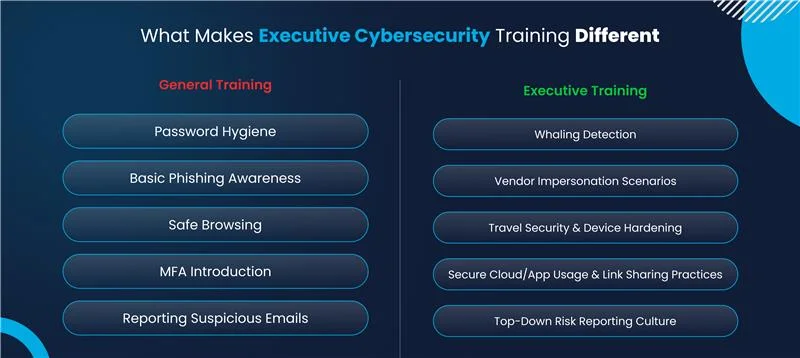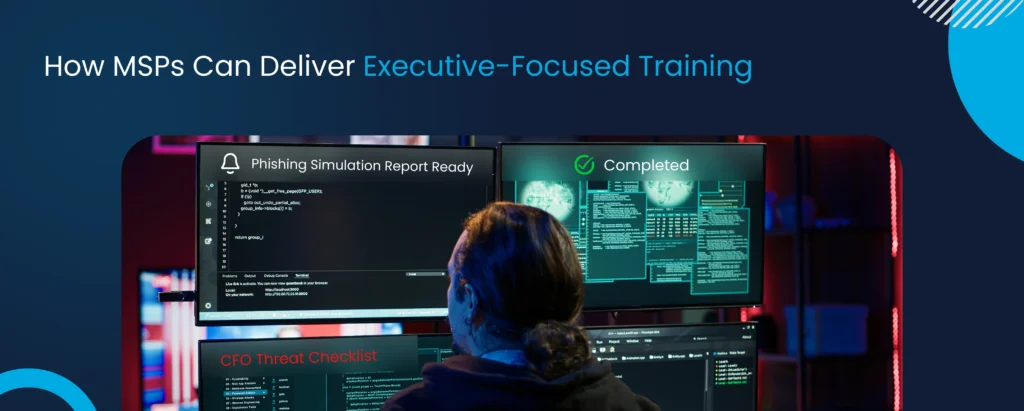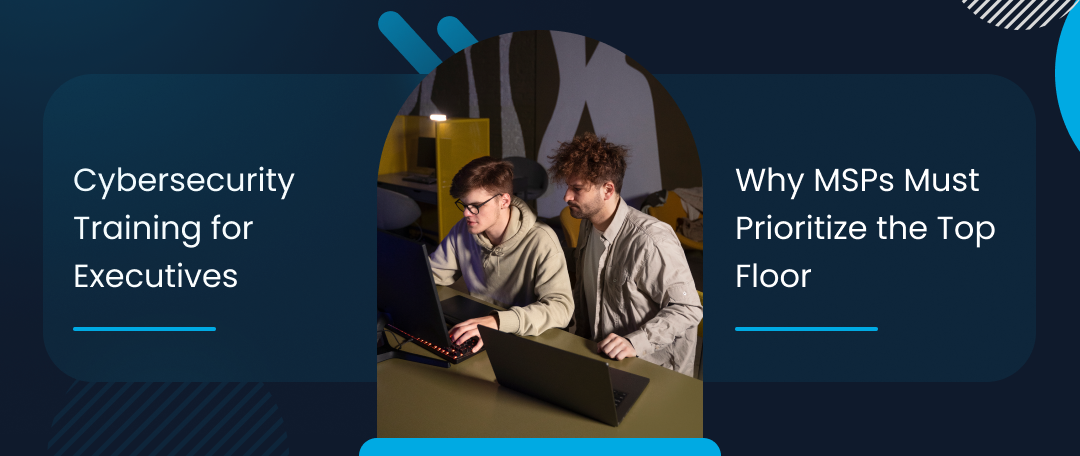Executives Are High-Value Targets
Attackers go where the access is. Executives hold sensitive data, approve financial transactions, and often bypass standard security protocols. They’re frequent targets of whaling, business email compromise, and vendor impersonation. These scams aren’t just technical—they exploit authority and trust. That’s why executive cybersecurity training is essential.
According to the FBI IC3 2023 Report, Business Email Compromise (BEC)—which frequently targets executives—led to over $2.9 billion in losses in 2023 alone. If MSPs don’t provide role-specific cybersecurity education for leadership teams, they leave clients exposed at the top.
What Makes Executive Cybersecurity Training Different?
General employee training covers basics—password hygiene, phishing awareness, safe browsing. Executive training goes deeper into threat patterns aimed specifically at decision-makers.
What Makes Executive Cybersecurity Training Different?

Most employee training covers basics—like password hygiene and phishing awareness. Executive cybersecurity training goes deeper. It focuses on threats specifically crafted for decision-makers.
Executives need to know how to:
- Spot whaling attacks targeting CEOs and CFOs
- Recognize impersonation attempts from vendors or partners
- Avoid risks while traveling or using personal devices
- Catch calendar spoofing and fake meeting invites
- Handle sensitive documents securely—especially at the board level
This training also helps executives lead by example. When leadership models good habits—like reporting suspicious emails or using MFA—others follow.
This training also covers how executives influence company security culture. When leaders model good habits—using MFA, reporting suspicious messages—others follow.
Why do executives need different cybersecurity training?
Executives face unique risks. They’re more likely to approve payments, communicate with vendors, and use mobile or personal devices for work. Attackers know this and design scams to match.
What is whaling in cybersecurity?
Whaling is a targeted phishing attack that goes after high-ranking individuals—usually executives—with the goal of stealing money, credentials, or sensitive business data. Unlike broad phishing, whaling emails often appear personalized and credible.
Should MSPs offer executive-specific training to clients?
Yes. MSPs that offer this type of training add real value. It shows clients you understand their internal risk structure and aren’t offering a one-size-fits-all solution.
Key Elements of Executive Cybersecurity Training
1. Whaling and Impersonation Scenarios
Show how real attacks mimic vendor requests or internal emails. Include examples where attackers referenced public speaking events or investor calls—details executives often share online.
2. Secure Device Use
Executives often travel with laptops and phones that carry sensitive files. Training should cover:
- Using VPNs on public Wi-Fi
- Avoiding unauthorized USB use
- Keeping software patched
- Remote wiping in case of loss or theft
3. Cloud and App Access Controls
Executives frequently use apps like Slack, Dropbox, or Google Workspace for quick document sharing. Training should emphasize:
- Risks of shared links without expiry dates
- Strong permission controls
- Secure collaboration settings
4. Reporting Culture from the Top
If leadership hides when they make a mistake, the rest of the team will too. Training should reinforce that reporting isn’t a failure—it’s a duty.
5. Risk Awareness in Business Decisions
Executives involved in mergers, vendor onboarding, or finance must understand how cyber risks affect those processes. Training should touch on:
- Vetting third-party vendors
- Email spoofing during contract negotiations
- Proper storage of sensitive deal documentation
How MSPs Can Deliver Executive-Focused Training

Bundle It Into Quarterly Business Reviews
Use QBRs to show client executives what threats target them directly. Include real-world cases or recent incidents in their industry. Then offer training modules that address those threats.
Offer Short, Private Learning Sessions
Executives won’t sit through a 45-minute awareness video. Instead, provide:
- 5-minute on-demand videos
- 15-minute private webinars
- 1-page PDF briefs with red flags and action items
Track Completion Discreetly
Use training platforms that track who watched what and when—without micromanaging. Let leadership learn at their pace, but make it easy for the CISO or IT lead to see the results.
Include Role-Specific Phishing Tests
Send customized phishing tests with realistic subjects: “Updated payment terms for Q2,” or “Board meeting prep slides.” Provide immediate, private feedback if clicked.
Why ClipTraining Works for Executive Cybersecurity Needs
ClipTraining gives MSPs tools to deliver cybersecurity training to every layer of the organization—without extra complexity. For executive training, we provide:
- Targeted microlearning on leadership-specific threats
- Real-life phishing simulation templates for execs
- Custom content paths for different leadership roles
- Private viewing and tracking options for discretion
- Built-in policy review and acknowledgment tools
Everything lives in one platform, and it’s easy to include in your existing service packages.
Executives set the tone for company-wide cybersecurity habits. They’re also the most attractive targets for attackers. Help your clients protect their top floor.
With ClipTraining, your MSP can deliver professional-grade, executive-focused training without adding overhead. Start with a quick call, show them what leadership training looks like, and close the gap at the top.
Book a demo with ClipTraining to add executive training to your MSP stack.


